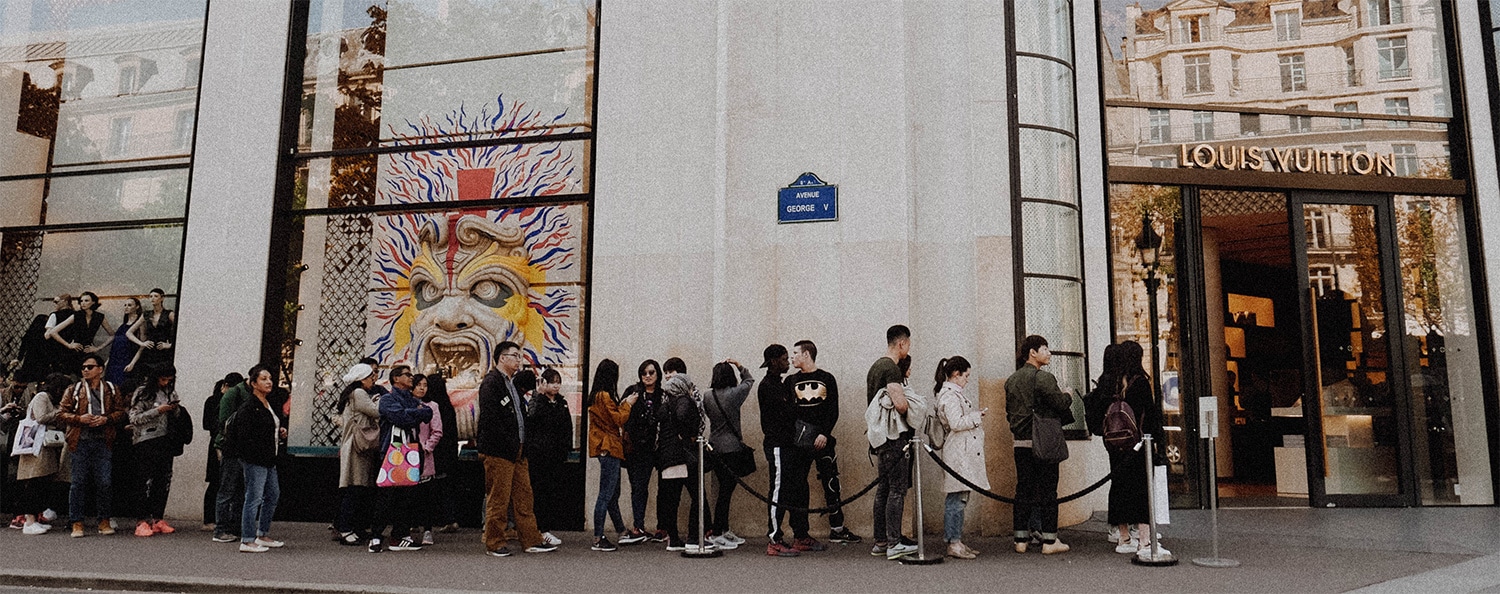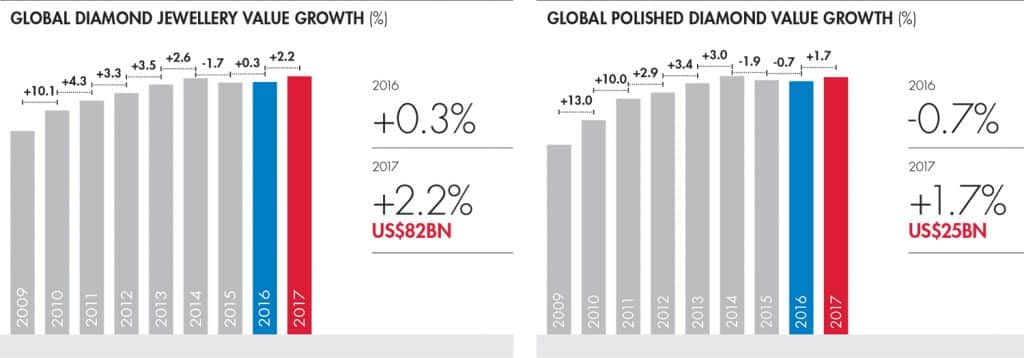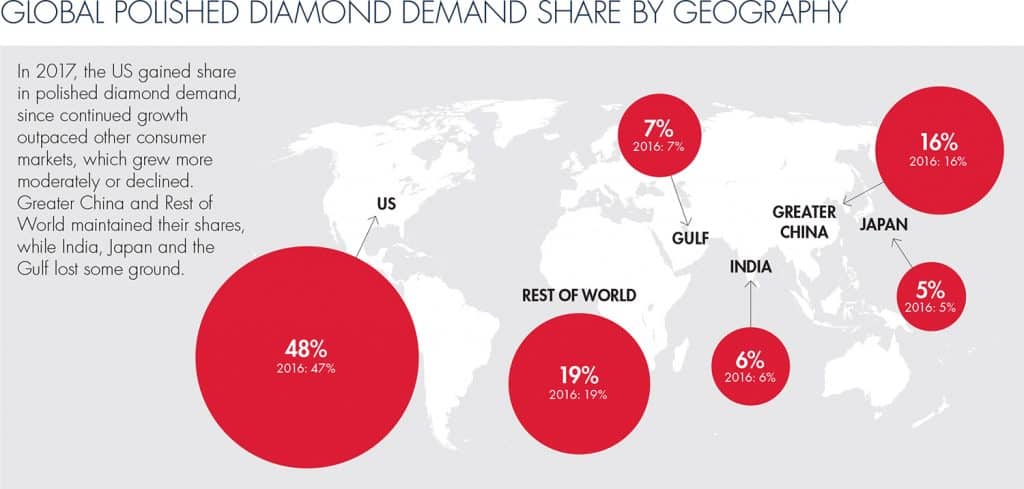CHINESE CONSUMER CONFIDENCE AT 20-YEAR HIGH
Consumer demand for diamond jewelry in China grew by a more modest 0.9 percent in U.S. dollar terms, although it was 3 percent up in local currency, as the country’s economy strengthened, and consumer confidence reached a 20-year high.
Diamond jewelry was Chinese women’s most desired luxury gift in 2017, De Beers reported. For 68 percent of women aged 18 to 54 it is one of their top two choices, and diamond jewelry is particularly sought-after to single women aged 21–38, living in Tier 1 cities.
But in India, the world’s third largest national market, consumer demand continued to decline in 2017, albeit, at 2.5 percent the decline was at a slower rate than it was in 2016. This, De Beers said was due mainly to the government’s demonetization initiative, the introduction of the Goods and Services Tax and the continuing anti-corruption and anti-money laundering regulations












